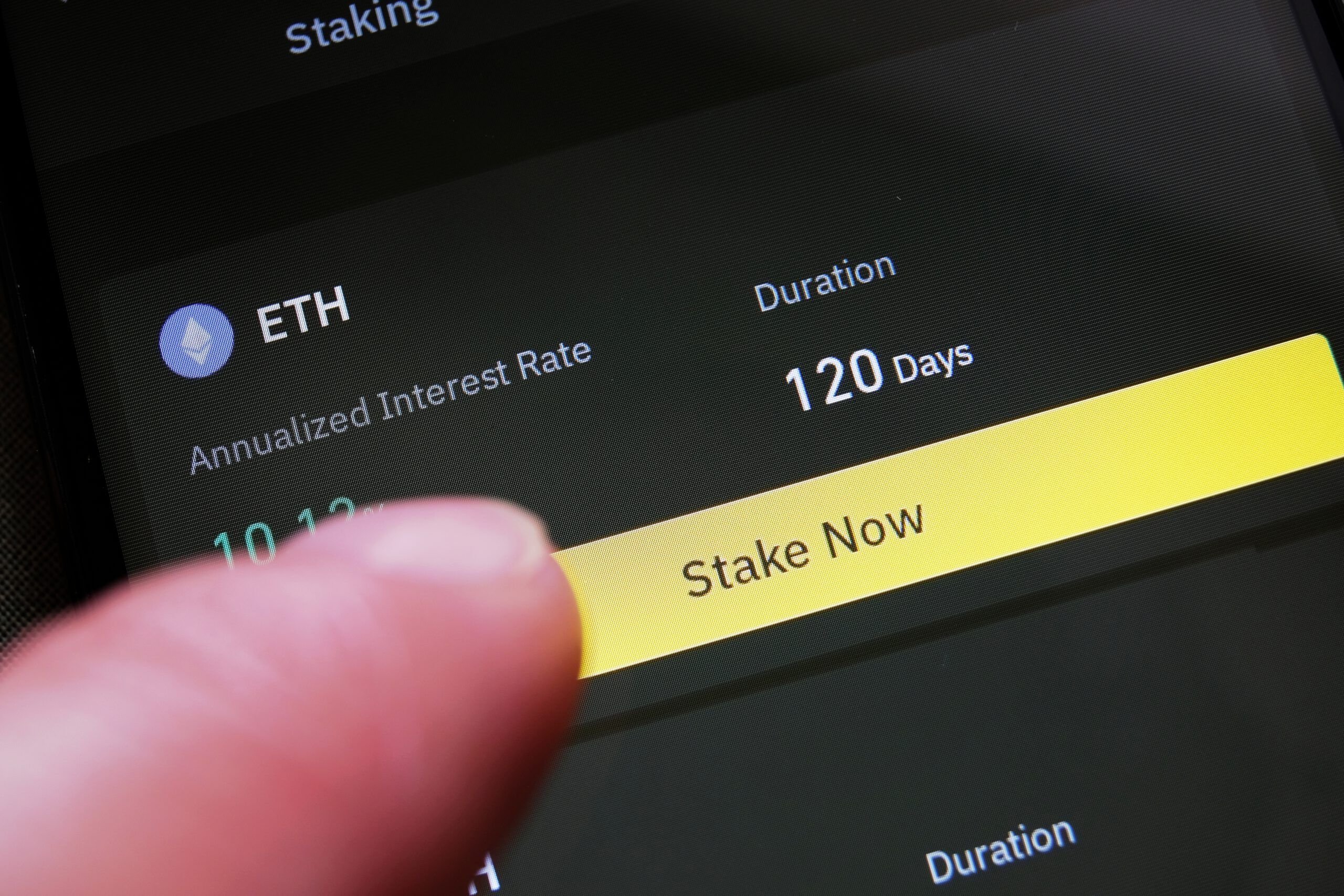
Since launching 12 years ago, Bankless Times has brought unbiased news and leading comparison in the crypto & financial markets. Our articles and guides are based on high quality, fact checked research with our readers best interests at heart, and we seek to apply our vigorous journalistic standards to all of our efforts.
BanklessTimes.com is dedicated to helping customers learn more about trading, investing and the future of finance. We accept commission from some of the providers on our site, and this may affect where they are positioned on our lists. This affiliate advertising model allows us to continue providing content to our readers for free. Our reviews are not influenced by this and are impartial. You can find out more about our business model here.
15 Best Cryptos to Stake For Returns in 2025


Staking is an activity that has become popular with many long-term crypto investors. Not only does it support the operation of blockchains, but it also provides a way of turning idle digital assets into a source of passive income. However, with so many different options to choose from, it can be hard to decide which coins to stake.
That’s why we’ve put together this comprehensive guide to the best cryptos to stake. We’ll analyze the staking benefits of each, as well as exploring the staking process, the risks, and the top platforms for staking. Below, you’ll find all the information you need to start staking cryptocurrency and earning rewards.
- Top Coins to Stake in 2025 (Last updated 5th December 2024)
- 1. Ethereum
- 2. Cardano
- 3. Polkadot
- 4. Binance Coin
- 5. Cosmos
- 6. Solana
- 7. Algorand
- 8. Chainlink
- 9. Tezos
- 10. Avalanche
- 11. Polygon Network
- 12. Hedera
- 13. Kusama
- 14. Kava
- 15. Near Protocol
- What Is Crypto Staking?
- How To Choose the Best Coins To Stake
- Is Staking Safe?
- What Is The Best Place To Stake Crypto?
- Final Thoughts
- FAQs
Top Coins to Stake in 2025 (Last updated 5th December 2024)
| Crypto | Reward rate | Unbonding period |
| Ethereum | 3.42% | Variable |
| Cardano | 2.67% | 0 days |
| Polkadot | 11.93% | 28 days |
| Binance Coin | 7.27% | 7 days |
| Cosmos | 14% | 21 days |
| Solana | 6.64% | Up to 2 days |
| Algorand | 4.36% | 3-month governance period |
| Chainlink | 4.75% | 28 days |
| Tezos | 9.29% | 0 days |
| Avalanche | 7.79% | 0 days |
| Polygon | 4.77% | 9 days |
| Hedera | 0.12% | 0 days |
| Kusama | 16.81% | 7 days |
| Kava | 8.5% | 21 days |
| Near | 9.21% | 2 days |
1. Ethereum
Ethereum is the second-largest cryptocurrency by market cap. It pioneered blockchain smart contracts—self-executing code that enables developers to build on the blockchain. This has facilitated thousands of other tokens and decentralized applications (dApps) being launched on Ethereum, making it the de facto home of NFTs and decentralized finance (DeFi).
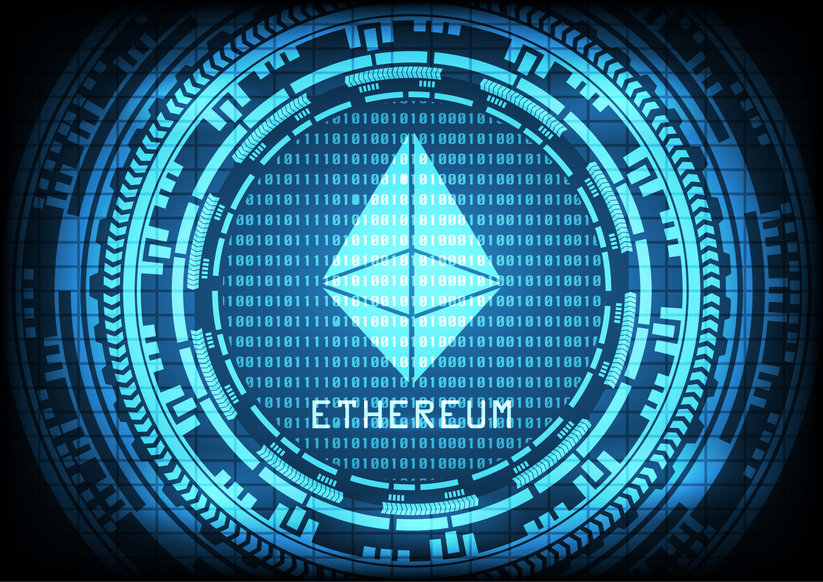
Ethereum Staking
Ethereum was originally a Proof of Work blockchain, like Bitcoin, meaning it required miners and used a huge amount of computing energy. However, Ethereum became 99.95% more efficient when it transitioned to Proof of Stake in 2022.
Becoming an Ethereum validator requires staking 32 ETH, but staking pools and centralized exchanges enable people to earn rewards by staking much less.
Staked ETH couldn’t be unstaked while the set of upgrades known as Ethereum 2.0 was ongoing, but ETH withdrawals were enabled with the Shanghai network upgrade in April 2023. Although Ethereum doesn’t have a specific lock-up or unbonding period, it could take a few days to unstake coins, depending on how many requests there are to process.
At the time of writing, staking ETH generates annual rewards of about 3.5%, but this rate is dynamic. It will decrease as the total amount of staked ETH increases and vice versa. ETH staking rewards come from a combination of gas fees and new tokens minted at each block.
Find out more and how to stake ETH in our comprehensive guide to Ethereum staking.
Why Stake ETH?
- Reputation – Ethereum is the largest PoS coin by market cap and one of the oldest. It also has a strong development team and a large and active community. This makes it unlikely that Ethereum will fade into obscurity any time soon.
- Supply and Demand – Although new tokens are created at every block to provide staking rewards, the introduction of a fee-burning mechanism means that the total ETH supply has actually been decreasing. If this deflation continues, steady or increased demand could mean an increase in ETH’s price over time.
- Utility – ETH is required to pay gas fees for transactions, which includes the use of all cryptocurrencies, NFTs, and apps hosted on Ethereum. As the ecosystem grows, we could see more demand for ETH, as well as more gas fees being burned.
2. Cardano
Launched in 2017, Cardano is a scalable and sustainable blockchain platform that has been developed through peer-reviewed research and evidence-based methods. The Alonzo hard fork in 2021 enabled smart contracts on the blockchain, meaning Cardano can host applications.
The blockchain is already being used for a range of use cases, such as ID verification, supply chain tracking, and medication provenance. The native token of Cardano is called ADA.



Cardano Staking
Cardano uses its own unique staking protocol called Ouroboros, which it claims is highly scalable and sustainably secure. The Cardano network uses stake pools, so ADA holders can either run their own stake pool or delegate their ADA to other stake pool operators. The delegation process is simplified by staking ADA through a centralized exchange.
Ouroboros divides the blockchain into time slots and selects a stake pool to be the slot leader and earn staking rewards for each slot. The crypto rewards are distributed each epoch, which comprises 432,000 slots and lasts roughly 5 days.
The Cardano staking rewards are about 4.6% at the time of writing. There is no minimum staking requirement but there is a 2 ADA delegation fee to start staking coins.
Check out our Cardano staking guide to find out how to stake ADA.
Why Stake ADA?
- No Penalties – Many PoS coins use a process called slashing to confiscate staked assets from validators who misbehave and their delegators. Cardano’s decentralized model means it doesn’t use slashing, so you’re not at risk of losing your ADA, regardless of who you delegate to.
- No Lock-Up Periods – Some PoS coins require staked tokens to be locked and inaccessible for a minimum period, and/or tokens may go through an unbonding period of days or weeks before they can be unstaked. There are no such limitations on Cardano, so you will be free to transfer or trade your staked ADA at any time.
- Compounding Rewards – When you receive ADA staking rewards, they will automatically be added to your staked ADA. This increase in your delegated stake means that your crypto staking rewards will compound over time, leading to more rewards.
3. Polkadot



Polkadot is a growing ecosystem of specialized blockchains known as parachains. Crypto projects can create a custom blockchain and connect it to Polkadot. This model provides energy efficiency, scalability, and interoperability for apps and tokens between different blockchains.
Polkadot’s native DOT token is used for governance, staking, and adding and removing parachains.
Polkadot Staking
Polkadot uses a system called Nominated Proof of Stake, in which the validators who secure the network are voted for by other network participants called nominators. Both validators and nominators receive staking rewards. There are four different methods of staking DOT:
- Running a validator – This is the most difficult option. As well as a significant amount of DOT, validators require the right hardware and significant technical understanding.
- Nominating directly – If you want to nominate validators for yourself, you can do this through Polkadot’s staking dashboard, but you’ll need around 370 DOT.
- Opening a nomination pool – You can open your nomination pool to other stakers if you’re confident in your validator nomination skills.
- Joining a nomination pool – This is the best option for those with less technical knowledge. Someone else will handle nominations for you and you only need 1 DOT.
The easiest way to stake DOT is through a centralized exchange. All you have to do is click a button and the platform will take care of everything else. You don’t even need to set up your own wallet.
Polkadot uses a slashing policy for security. This means that malicious activity can lead to the confiscation of some or all of the staked coins belonging to the validator responsible and their nominators.
There is an unbonding period of 28 days on Polkadot, which means when you want to unstake your DOT you will need to wait 28 days before you can access your coins, during which, you won’t earn any rewards.
Why Stake DOT?
- High rewards that can compound – Polkadot offers some of the highest staking rewards of major PoS coins at around 10-15%. What’s more, those who nominate directly have the option to add their rewards to their bond to compound their interest.
- Nominate multiple validators – Nominators can choose up to 16 validators. Not only does this increase decentralization and security of the network, but it also helps mitigate the risk of loss through slashing.
- Governance rights – If you nominate directly or you have extra DOT that isn’t in a nomination pool, you’ll be able to vote on important decisions about the future of the protocol, such as upgrades.
4. Binance Coin
Binance Coin (BNB) is the exchange token for Binance, the largest crypto exchange by market cap. It provides holders with benefits such as trading fee discounts and access to exclusive token sales on Binance Launchpad. It is also used to pay transaction fees on the BNB Beacon Chain and BNB Smart Chain (formerly Binance Smart Chain).
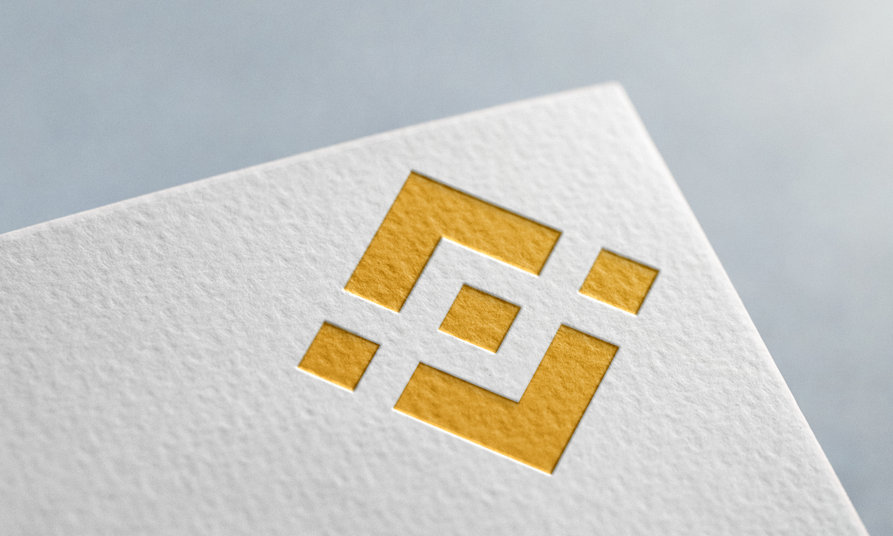


BNB Staking
The BNB Smart Chain uses a special consensus mechanism called Proof of Staked Authority (PoSA), which combines elements of both Proof of Authority (PoA) and Delegated Proof of Stake (DPoS) protocols.
The system requires just 21 community validators at any time to process transactions. Validators go through a daily re-election process, and other BNB holders can take part in this process by delegating their coins to a validator candidate for a share of the rewards.
Delegators can unstake or redelegate their coins at any time, but they’ll have to wait for an unbonding period of 7 days. You can currently expect to earn anything from 7.27% from BNB staking, with rewards distributed daily.
Why Stake BNB?
- No slashing for delegators – Although validators can have their stake slashed for bad behavior, the loss isn’t shared by the delegators, so your tokens will be safe whomever you delegate to.
- Deflationary supply – Binance has quarterly BNB burns in which it destroys a number of tokens based on trading volume. This reduction in total supply could lead to each BNB token being worth more in the future.
- Growing ecosystem – BNB Chain hosts many popular tokens and dApps, including PancakeSwap and Venus Protocol. As BNB staking rewards come from transaction fees, more projects and users joining the ecosystem could mean more rewards.
5. Cosmos



Cosmos provides the tools and modular framework for developers to build blockchains and blockchain-based apps and services—all of which are connected thanks to the Inter-Blockchain Communication protocol (IBC). This allows for the free exchange of assets across blockchains.
The Cosmos Hub is the low-cost, environmentally-friendly blockchain at the heart of this ecosystem, and its native token, ATOM, is used for staking and voting on governance.
ATOM Staking
Anyone can become a validator on Cosmos if they have the right equipment and knowledge. The minimum stake required to be a validator is just 1 ATOM, but you’ll need much more than this in total to become one of the top 180 validators who earn rewards.
Most stakers opt to delegate their ATOM to validators instead. You can do this in a private wallet by selecting which validator(s) you want. Alternatively, you can stake ATOM through a centralized exchange, which is much easier but you won’t get to choose your own validators.
Choosing multiple validators with strong credentials is recommended, as you could potentially lose coins through slashing if your validator experiences downtime.
As Cosmos has an unbonding period, you’ll need to wait 21 days before you can access any ATOM you unstake. However, some exchanges may offer instant access to ATOM when you want to unstake if they have sufficient liquidity.
You can expect a typical APY of up to 14% when you stake ATOM, and these rewards come from a combination of transaction fees and inflationary block rewards.
Why Stake ATOM?
- Governance rights – By staking ATOM, token holders gain the right to vote on proposals and have a say on the future of the network. The more ATOM they stake, the greater their voting power.
- Rewards from multiple blockchains – The Interchain Security feature means many chains will be secured by ATOM, so staking rewards could increase thanks to the transaction fees on these other chains.
- Staking rewards counteract inflation – Cosmos uses inflation as a mechanism to encourage staking by diluting the supply over time. So if you’re holding ATOM anyway, you’d be better off staking it if you don’t want your tokens to lose value in the long term.
6. Solana
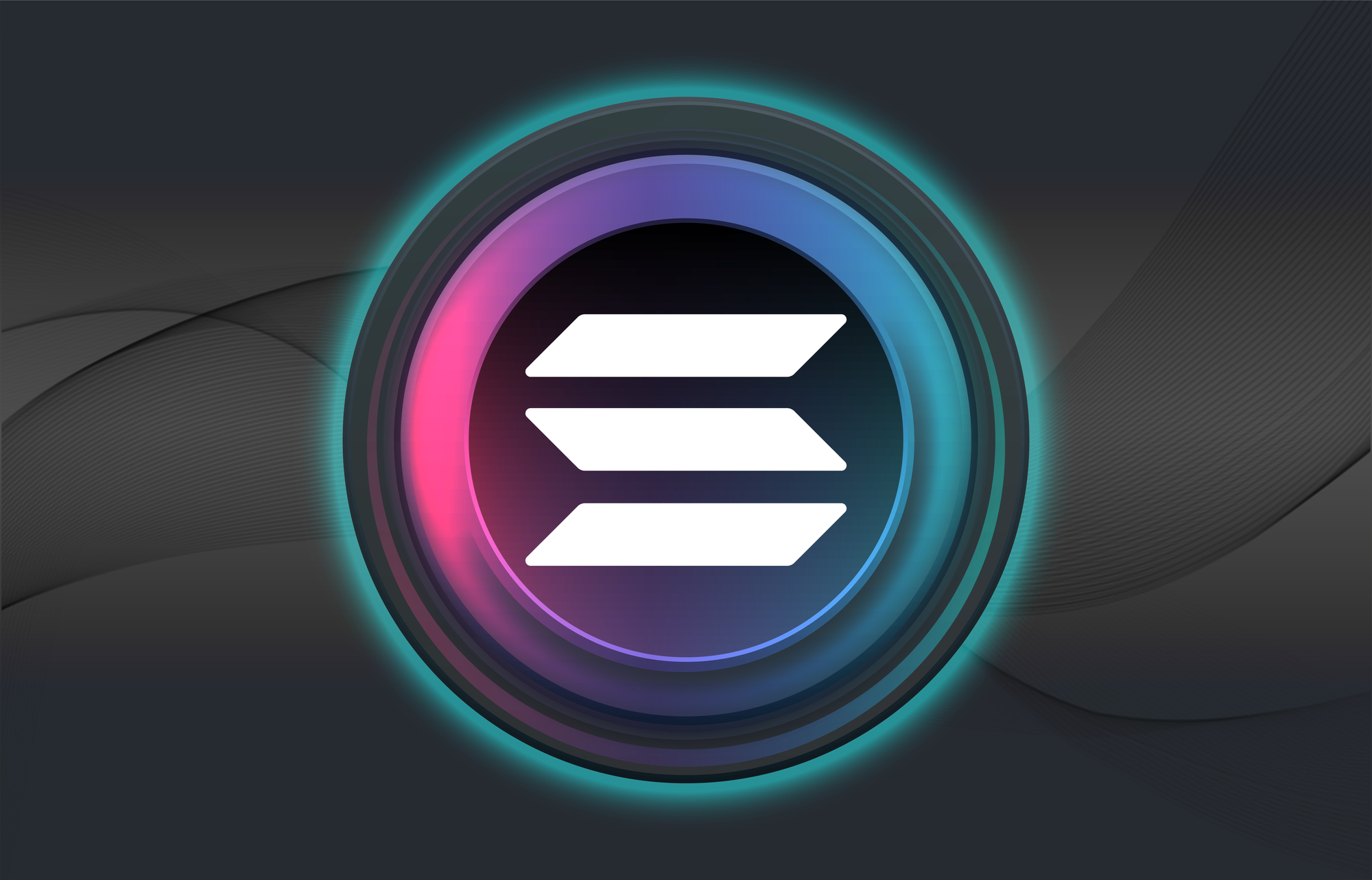


Solana is a fast, scalable, and energy-efficient blockchain designed for mass adoption. It supports the creation of dApps and has already found applications in DeFi, gaming, payments, DAOs, and NFTs. Part of the reason for Solana’s performance capabilities and popularity is its unique hybrid consensus mechanism.
SOL Staking
Solana combines Proof of Stake with its own innovative technology called Proof of History. This speeds up transaction validation by building timestamps into the blockchain itself, rather than slowing down the process by referring to an outside, centralized time source.
Anyone can become a Solana validator. There is no strict minimum amount of SOL required, as long as you have the right hardware and know how to keep it running properly. The more common route to staking, however, is to delegate SOL to one or more validators.
Those with some technical knowledge could run a stake pool, while less experienced users could delegate through the Solflare wallet. Easier still is the option to stake through a centralized exchange.
Staking rewards come from a combination of transaction fees and inflation. Solana’s initial annual inflation rate is 8%, but this is set to decrease by 15% each year until it reaches a long-term fixed inflation rate of 1.5%. The reward rate is currently around 6.64% depending on the approach, and rewards are distributed every 2-3 days.
When you wish to delegate or undelegate your tokens, they will go through an “activating” or “deactivating” period until the start of the next epoch, which can take up to a couple of days.
Both validators and delegators can be affected by slashing on Solana, but the process isn’t automatic. Instead, the reasons for a safety violation will be analyzed, with the aim of slashing 100% for malicious activity and 0% for failure during routine operation.
Why Stake SOL?
- Innovative technology – Many investors and stakers are attracted to Solana due to its unique architecture. Solana’s Proof of History consensus makes the blockchain fast, cheap, and scalable.
- Growing ecosystem – Many projects and tokens have already been built on Solana, from DeFi apps to games and NFTs. As stakers earn rewards from transaction fees, a growing number of people and projects interacting with Solana could lead to more rewards in the future.
- Long-term value – The best crypto staking coins are often those that will make a good long-term investment. Solana’s scalable design, growing number of use cases, and disinflation could all contribute to its value in the future.
7. Algorand
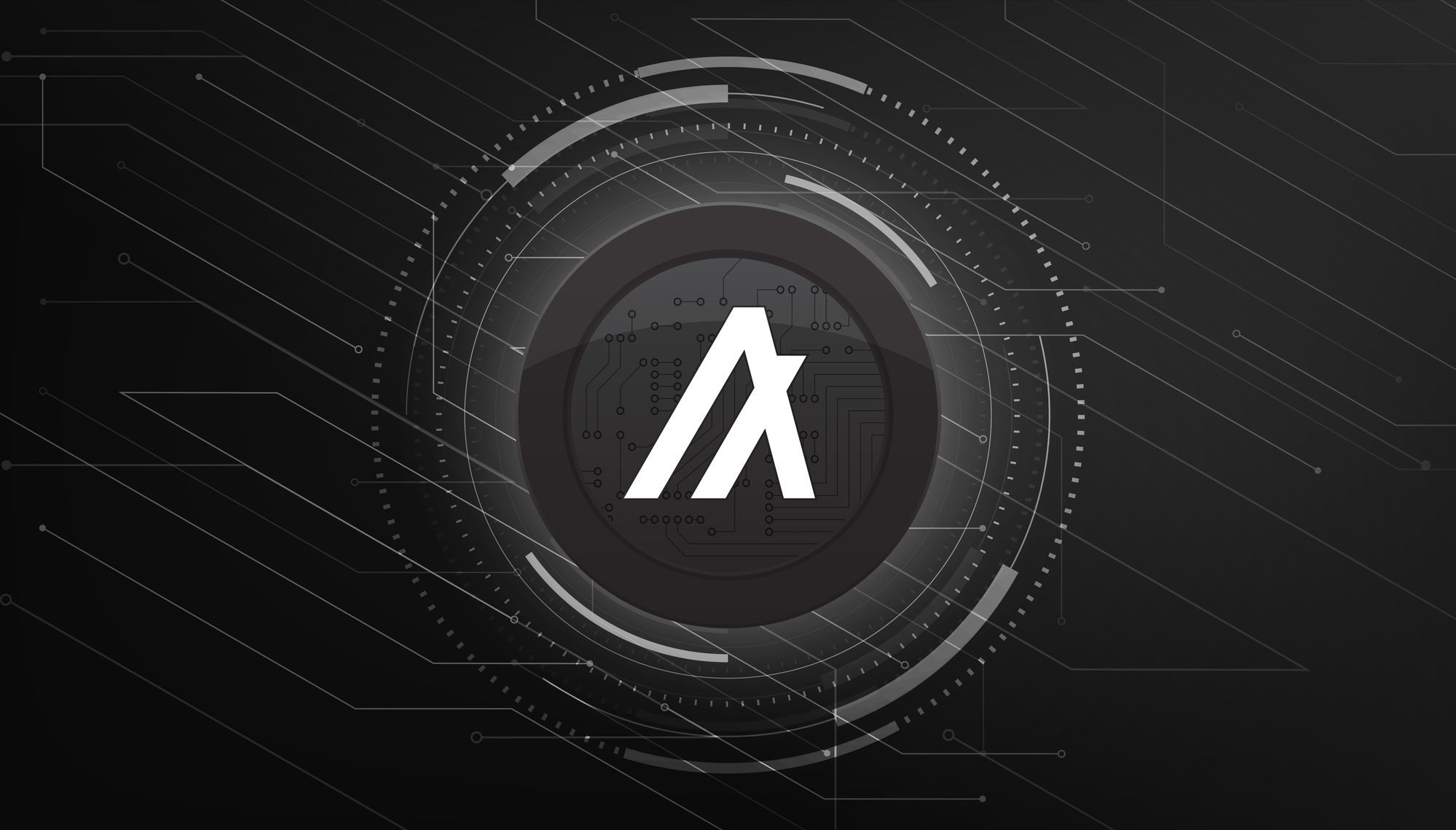


Algorand is a highly decentralized and scalable blockchain that is environmentally sustainable. Its low transaction costs make it an attractive destination for building apps, services, and NFTs. The many projects already launched on Algorand include DeFi services, art and music NFTs, games, oracles, and environmental organizations.
The native ALGO token is used for consensus, governance, and paying for transactions, goods, and services on-chain.
Algorand Staking
Algorand’s unique consensus mechanism is called Pure Proof of Stake. It enables speed and true decentralization through its cryptographic sortition process. Although Algorand ended its passive rewards program for staking in 2022, ALGO holders can still participate and earn rewards through the Algorand Governance program.
To participate, ALGO holders will need to sign up at the start of a governance period and commit (stake) their ALGO for a full governance period (3 months). Although committed ALGOs aren’t locked and can be withdrawn at any time, if your balance falls below the amount of ALGO you committed at the start of the governance period, you won’t be eligible to claim rewards.
Governors get one vote per ALGO they commit, and they will get a couple of weeks to consider and vote on each proposal. They can choose to delegate their votes to more knowledgeable governors or vote in line with the Algorand Foundation’s advice on topics that they’re unfamiliar with.
The rewards rate will vary each quarter depending on the total amount of ALGO committed for that governance period, but the annualized rate is around 4.36%. Rewards earned are distributed at the end of each governance period. At this point, your ALGOs will be uncommitted and you will need to recommit them if you want to participate in the next governance period.
Those who want to be governors will need to connect a suitable wallet (Pera Wallet, Ledger, and Defly Wallet are all compatible) to the Governance dashboard. Some exchanges (like Bitstamp) may participate in Algorand Governance on behalf of users with no action required.
If you don’t want to take part in the Governance program, there are other ways to earn passive income on ALGO, such as lending and crypto savings accounts. Platforms like Binance and KuCoin offer an annual percentage yield on ALGO.
Why Stake ALGO?
- No slashing – There are no slashing penalties on Algorand so you don’t need to worry about losing your tokens due to validator failure.
- Governance rights – The whole point of Algorand’s staking program is to vote on proposed changes to the blockchain. If you care about the future of the project, this is a great way to have your say.
- Carbon-negative – In 2021, Algorand became carbon-negative. It also partners with environmentally focused organizations such as ClimateTrade and PlanetWatch. So if sustainability is important to you, Algorand is one of the best crypto staking coins to support.
8. Chainlink
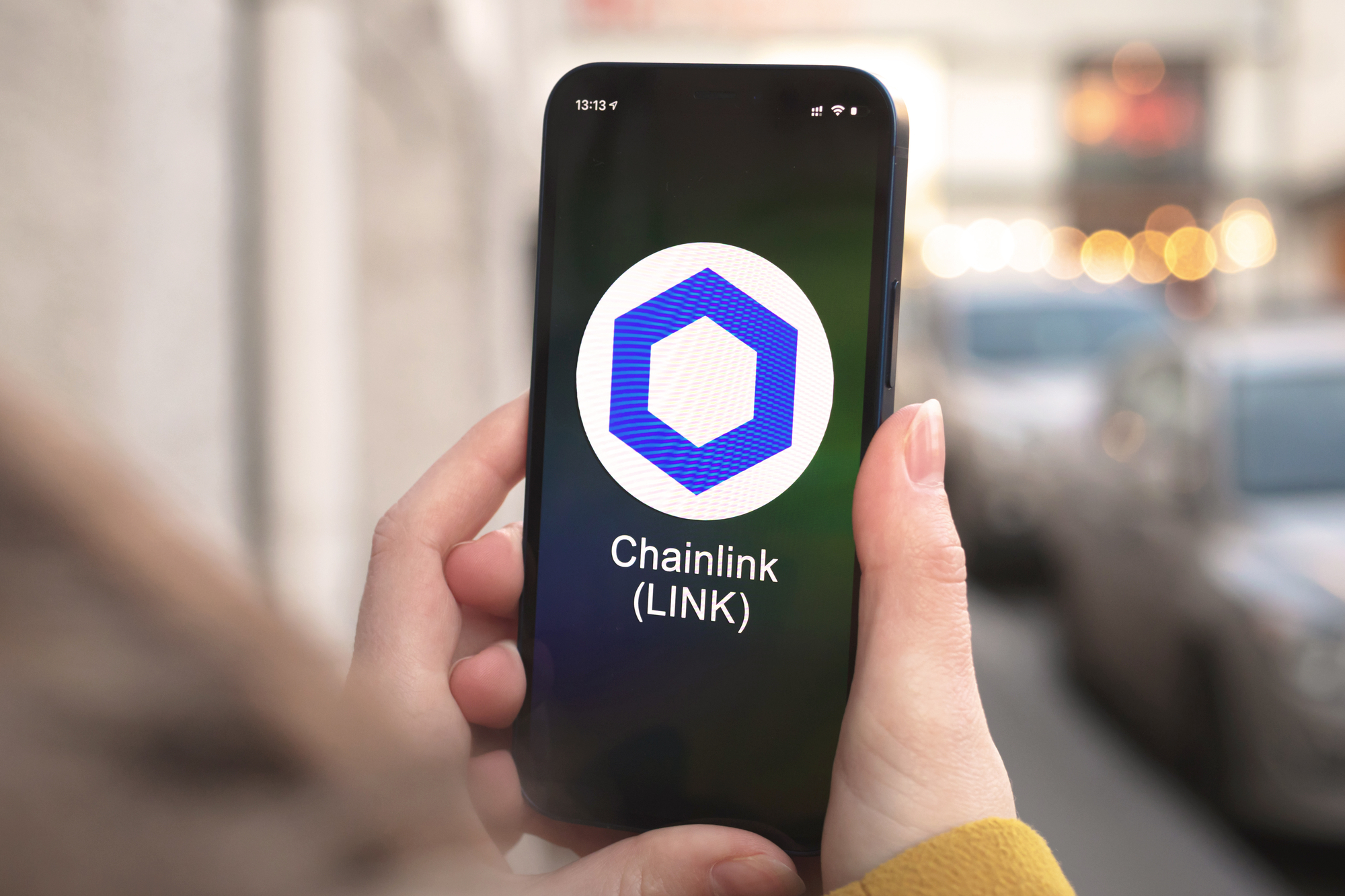


Chainlink is a decentralized oracle network. Blockchains don’t have an in-built ability to connect with the outside world, which means that for blockchains to have useful real-world applications, they require software components called oracles that can fetch external data. Chainlink’s oracles provide access to data feeds such as crypto prices for DeFi or emission levels for environmental projects, as well as providing randomness to blockchain gaming.
Chainlink Staking
As Chainlink is an oracle network rather than a blockchain, it doesn’t produce blocks and so staking doesn’t apply in the same way as on Proof of Stake blockchains. Instead, Chainlink staking aims to provide cryptoeconomic security and ensure the reliability of oracle services.
Node operators will be able to back up their oracle services and access higher-value jobs by putting their LINK at stake. The tokens staked provide a service-level guarantee of performance, as if an oracle network underperforms, some of that staked LINK can be slashed.
Regular LINK holders will be able to earn staking rewards by delegating their tokens to node operators, while they will also be able to earn a reward by raising an alert when an oracle service has failed to meet set performance standards.
This system started with the launch of Chainlink Staking v0.1 in December 2022, which provides performance tracking and alerting for just the ETH/USD price feed, with plans to expand to more feeds and services in future releases of the staking program.
Any LINK holders could join the Chainlink Staking Community Pool to earn an annualized reward rate of 4.75%. However, the tokens staked are to be locked until the release of Staking v0.2, expected to happen 9-12 months after the v0.1 launch.
As the v0.1 Community Pool has already been filled, anyone wishing to participate in the Chainlink Staking program will need to wait until a future release. However, there are other ways to earn passive income on LINK in the meantime, such as LINK lending and savings accounts, available on platforms such as Binance and Nexo.
Why Stake LINK?
- An essential service – Oracles are vital to the operation and success of blockchain applications, and Chainlink is a leader in this field. This makes an attractive value proposition for investors and could mean longevity for the project and its rewards.
- Alerting rewards – Any staker can earn rewards by raising alerts about underperforming oracles. This improves the reliability of oracle services and the applications they serve.
- Future reward sources – While v0.1 staking rewards come from native token emissions, more sources of rewards are anticipated in the future, such as user fees, the Partner Growth Program, and fees associated with loss protection.
9. Tezos



Tezos is an efficient and secure blockchain designed to power Web3. Similar in its smart contract functionality to Ethereum, Tezos differs in that its infrastructure is built to adapt, so it can seamlessly upgrade without the need for a hard fork. It also has a modular architecture that makes it easily scalable.
The native XTZ token is used to pay fees, interact with dApps, and secure the network through staking.
Tezos Staking
Validators in Tezos’ Proof of Stake system are known as “bakers”. As well as signing and publishing blocks of transactions, bakers vote on proposals, allowing for seamless upgrades of the blockchain. In order to bake blocks, a baker needs at least one “roll” of XTZ, which is 6,000 XTZ.
Those who don’t want to validate or have less than 6,000 XTZ can delegate their XTZ to a baker for a share of the rewards. Bakers also receive the voting power of their delegators.
Tezos uses a Liquid Proof of Stake (LPoS) consensus mechanism, which has no fixed number of block producers, lower hardware requirements for validators, and no requirement for tokens to be locked up. You can expect to earn about 3.5% to 7% by staking Tezos.
Why Stake XTZ?
- No lock-up periods – Unlike some of the other best staking coins, XTZ doesn’t have a minimum staking period or unbonding period. This means you won’t need to commit to holding XTZ for any specific length of time, so if there’s a change in the market, you can unstake your coins and sell immediately.
- Swift and democratic upgrades – Tezos’ easily upgradeable architecture means that there won’t be long waits for improvements to be implemented. What’s more, the blockchain’s liquid staking mechanism means you can redelegate to a baker with your preferred voting intentions whenever you like.
- No minimum – While bakers require at least 6,000 XTZ, there are no such limits imposed on delegators, so you can stake as much or as little as you like.
10. Avalanche
Avalanche claims to be the fastest smart contract blockchain measured by time to finality. It is low cost, built to scale, environmentally sustainable, and provides the tooling to quickly and easily launch applications. The native AVAX token can be used for funding DeFi dApps, minting NFTs, playing Web3 games, and staking.
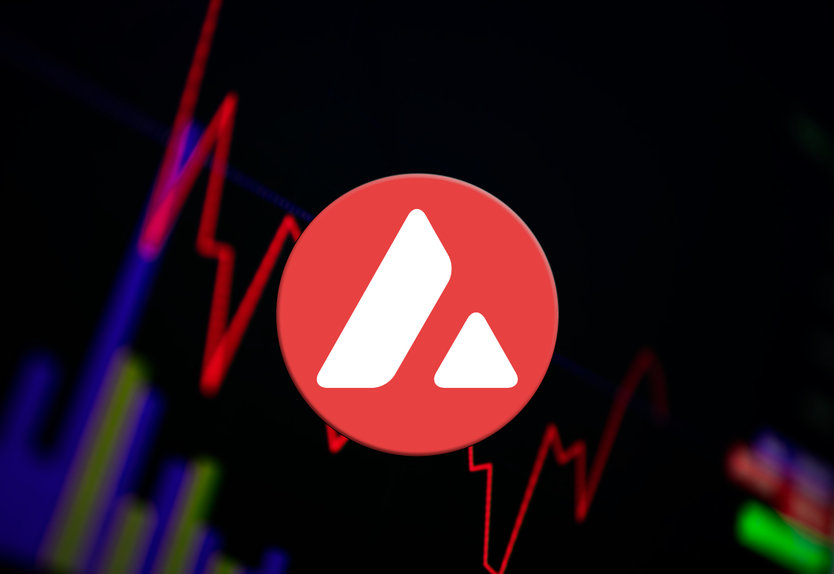


Avalanche Staking
Avalanche allows an unlimited number of validators, increasing its decentralization. In order to become a validator, you need to stake at least 2,000 AVAX and maintain at least 80% uptime.
Those who wish to delegate need to stake a minimum of 25 AVAX. For both validators and delegators, the minimum amount of time they can stake for is two weeks, and the maximum is one year.
You will receive any rewards you earned when you stop validating or delegating. However, you will need to specify in advance when you want to start and stop validating/delegating, and you won’t be able to withdraw your coins or change your stake amount during the validation/delegation period.
However, if you stake coins through a centralized staking platform, you may be able to stake and unstake any amount at any time, as well as receive regular reward payouts.
Rewards don’t compound on Avalanche, and they are paid through new token emissions. Instead of going to validators as on some other Proof of Stake blockchains, Avalanche transaction fees are burned. The current reward rate is 7.79%.
Why Stake AVAX?
- No slashing – Avalanche doesn’t use slashing as unresponsive nodes simply don’t earn rewards. This means you won’t need to worry about your coins getting confiscated.
- Capped supply – AVAX has a capped maximum supply of 720 million AVAX, with an emission curve similar to Bitcoin’s. This provides scarcity for AVAX, potentially making it a good long-term store of value. What’s more, the burning of fees can increase this scarcity by counteracting supply growth.
- Governance – Stakers, or the validators to whom they delegate, have the power to vote on and adapt key system parameters, such as reward rate, fees, and staking times and amounts. This enables stakers to mold the system to better serve their interests and avoid deflation and hyperinflation.
11. Polygon Network
Polygon is an Ethereum Layer-2 scaling solution. This means that it can make transactions and dApps faster, cheaper, and higher throughput by handling transactions off the Ethereum mainnet. Polygon Network’s cryptocurrency, MATIC, is used to pay gas fees, govern the network, and secure it through staking.



Polygon Staking
A minimum of just 1 MATIC is required to become a validator on Polygon Network. However, there is currently a waitlist to become a validator as all validator slots are full. MATIC holders can still earn staking rewards, though, by delegating their tokens to an existing validator.
There is no minimum amount of MATIC required to delegate, but the MATIC will need to be held on the Ethereum mainnet, along with some ETH to pay the transaction fee.
Currently, only Coinbase Wallet and the MetaMask browser extension can interact with the Polygon staking dashboard, along with hardware wallets like Ledger through MetaMask. However, you can also stake through centralized platforms like Kraken or Uphold if you don’t want to deal with gas fees and validator selection.
Rewards are distributed every checkpoint, which is roughly every 34 minutes. Once you receive rewards, you can withdraw them immediately, if you wish, or restake them. If you want to unstake your MATIC, you’ll need to wait for an unbonding period of approximately nine days.
The rewards are a combination of MATIC allocated from the total supply and transaction fees. At the time of writing, the current reward percentage for Polygon staking is 4.77%.
Why Stake MATIC
- Option to compound rewards – Polygon provides the option to restake rewards, meaning they will grow at a faster rate. This isn’t mandatory, however, and those who want to instantly withdraw their rewards instead can do so.
- Explosive growth – With higher speeds and lower costs than Ethereum, Polygon has grown dramatically, attracting thousands of dApps and users. As stakers also earn transaction fees, more activity on the Polygon network could make MATIC staking more lucrative.
12. Hedera



Hedera is an open-source public network that powers web3 ecosystems and institutional applications. Transactions are fast and low-cost, and the network is very energy efficient with a commitment to be carbon negative. The Hedera Governing Council comprises leading organizations around the world, such as Google, IBM, Chainlink Labs, and UCL.
The native cryptocurrency, HBAR, is used for staking and to pay for transactions, using dApps, and minting tokens.
Hedera Staking
Unlike on most Proof of Stake blockchains, it isn’t possible for regular HBAR holders to become validators as the nodes are operated by the Hedera Governing Council. However, any HBAR holder can stake coins to a node to earn a share of the staking rewards.
Hedera also enables indirect staking, meaning a user can stake to another account, which is in turn staked to a node. There is no lock-up or unbonding period on Hedera, so tokens remain liquid at all times. However, tokens must be staked for a minimum of one day to be eligible to earn rewards.
Staking rewards aren’t distributed on a regular basis. Instead, rewards payments are triggered by a range of scenarios such as changing the amount staked or staking to a different node. If a rewards payment isn’t triggered for over a year, you will only be able to collect the rewards earned over the last 365 days.
The Council has implemented a maximum cap of 6.5% on the annual reward rate, though the actual rate will vary depending on the amount of HBAR staked.
Why Stake HBAR?
- No slashing – There is no concept of slashing on Hedera, so there is no risk of losing your crypto holdings if your node goes down. What’s more, in the current development phase, nodes and their delegators will continue to earn rewards even when they are inactivy.
- No lock-up period – There is no minimum amount of time that HBAR needs to be staked for, and coins can be instantly unstaked at any time. This means you don’t need to worry about your long-term investment plan or changes in the market, as you’ll be able to trade or sell staked HBAR whenever you like
- Network efficiency – Hedera’s carbon negative commitment makes it an attractive investment for stakers with ESG principles. Furthermore, this efficiency means that HBAR transactions are very fast with negligible cost.
13. Kusama



Kusama was developed by the same team as Polkadot and has the same architecture of parachains. It was designed to be a ‘canary network’ for Polkadot as new features are launched and tested in Kusama before deploying to Polkadot. Its fast development and low economic barriers make it a popular destination for innovators looking to experiment or prepare for deployment on Polkadot, though many projects choose to stay on Kusama.
The KSM token is used for transaction validation, voting, and bonding parachains.
Kusama Staking
Like Polkadot, Kusama uses a Nominated Proof of Stake consensus mechanism, but the minimum staking requirement to become a validator is much lower on Kusama. Technical understanding is still recommended, however, to avoid getting slashed for making a mistake.
The more accessible option is to become a nominator by appointing your stake to validators to earn passive income. It is still advisable to perform due diligence when selecting validators to reduce the risk of slashing.
You can do this using the Polkadot.js UI or Command Line Interface by bonding (locking up) your KSM and choosing which validator(s) to nominate. If you want to avoid the technicality of this, you can stake through a centralized exchange, which will handle bonding and nomination for you.
Rewards are distributed at the end of each era, which lasts about 6 hours, and are paid out equally to all validators regardless of the amount staked. If you want to unstake your KSM, you’ll need to wait until the end of the unbonding period – about 7 days.
The current reward rate for staking KSM is about 16.8%.
Why Stake KSM?
- High rewards – KSM is one of the best crypto staking coins for those seeking significant returns as it provides a higher APY than most other staking cryptos.
- Nominate up to 24 validators – Kusama allows you to nominate even more validators than Polkadot. This aids in the decentralization of the network and also reduces the risk posed by slashing penalties.
14. Kava
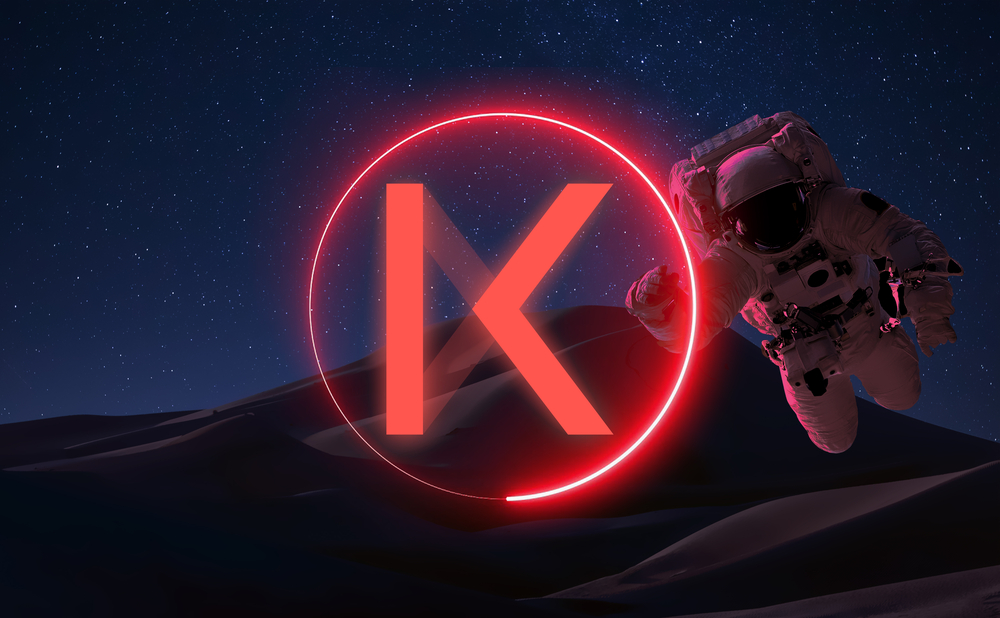


The Kava blockchain was built with the Cosmos SDK, making it interoperable with the rest of the Cosmos ecosystem. It is also an attractive chain for launching dApps, with its easy development program, speed, scalability, and EVM compatibility.
Kava Staking
Like Cosmos, Kava uses the Tendermint Core consensus engine to support its Proof of Stake system. But the two differ in some ways. For example, on Kava, only the top 100 nodes can become validators. There are also incentives for validators to deploy their infrastructure on Akash’s open cloud, in the form of lump sums of KAVA and AKT tokens after 30 days and 6 months.
Alternatively, KAVA holders can delegate their tokens to validators. By using a supported wallet such as Ledger or Trust Wallet, stakers can choose their own validators. However, like on Cosmos, it will take 21 days to receive your crypto assets after beginning the unstaking process.
You can also stake through an exchange to avoid choosing validators for yourself. This option may also enable you to make faster withdrawals without having to wait for the unbonding process to complete.
The rewards for staking come from a combination of block rewards and transaction fees. KAVA stakers can currently expect to earn about 8.5%.
Why Stake KAVA?
- Small slashing penalties – While Kava does implement slashing, the penalty for downtime is just 0.05%. Double signing carries a more significant penalty of 5%, but this still poses far less risk to stakers than some blockchains that slash as much as 100%.
- Liquid staking – With the Kava app, you can convert staked KAVA to liquid staked KAVA (bKAVA). This is then supplied to the Earn feature, which is a yield optimizer, providing an APY of about 23%.
- Potential for growth – Although the transaction fees collected on the Kava network at present are minimal, Kava’s speed, scalability, and incentives for new projects and developers could see the network grow in the future. This in turn could lead to more fees collected and therefore higher staking rewar
15. Near Protocol
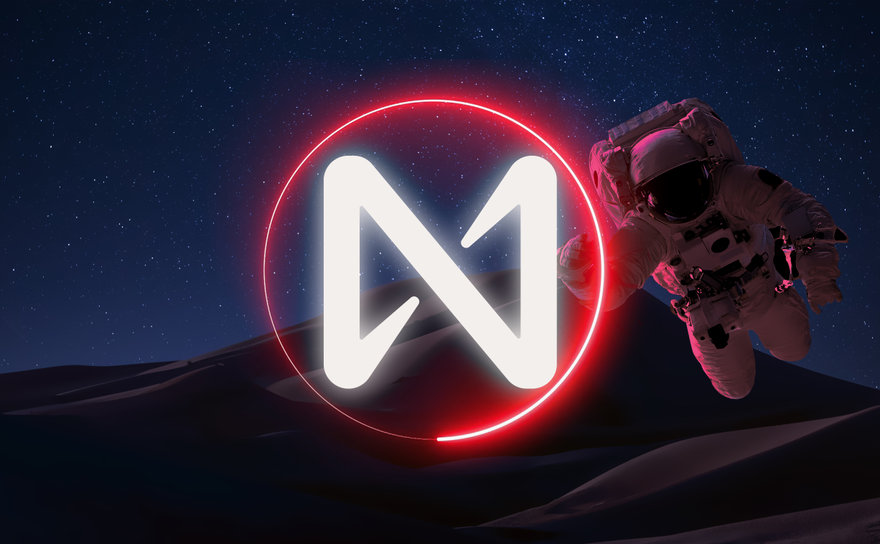


Near aims to simplify the process of creating and distributing dApps with the Near Blockchain Operating System (BOS). Development is sped up thanks to pre-built components and a familiar coding language, and dApps can then be distributed to any chain and reach users on any device.
Near Staking
Near uses a system called Threshold Proof of Stake (TPoS), which aims to provide decentralization, security, and fair rewards distribution. You’ll need at least 25,500 NEAR to become a validator, as well as the right hardware and skills.
Those who don’t want to validate can stake to a validator’s staking pool. This can be done through the official NEAR wallet or other supported wallets. You should leave at least 35 NEAR unstaked to cover the cost of storage and gas fees.
Stakers should choose validators wisely as some or all of their staked digital assets can be slashed for misbehavior. You can also stake tokens through an exchange that supports staking crypto. The exchange will take care of the delegation process for you.
The minimum staking period is just 12 hours, after which you can unstake your crypto assets at any time. You’ll need to wait 4 epochs, however, until you can withdraw your staking tokens, which is the equivalent of about 2 days.
The rewards for staking coins come from a supply inflation rate of 4.5%. This currently provides stakers with rewards of about 7% to 8% per year.
Why Stake NEAR?
- Short lock-up period – With a minimum stake period of just 12 hours and an unbonding period of 2 days, you can begin staking coins safe in the knowledge that you can trade or sell them at relatively short notice.
- Transaction fee burning – 70% of each transaction fee on the Near network is burned. Near’s incredibly high throughput and accessibility to developers could see the network grow, which could in turn lead to more tokens burned. This could counteract inflation and make each token more valuable in the long run.
What Is Crypto Staking?
Crypto staking is how Proof of Stake (PoS) blockchains are secured. Transactions made on the blockchain are verified by participants known as validators, but in order to become a validator, you first need to “stake” some of the blockchain’s native tokens, ie, lock them up.
These staked assets can act like a security deposit. If a validator were to act maliciously or incompetently, they could have some or all of their staked tokens confiscated (slashed). But if they fulfill their validator duties, they receive staking rewards in the form of more tokens.
Many PoS coins can also be staked by regular token holders, who can delegate their tokens to validators. This enables anyone to earn passive income, as they receive a share of the validator’s staking rewards without doing any of the work. This may be done by joining a stake pool or delegating directly within a private wallet.
Centralized exchanges (CEXs) simplify this process even further by selecting validators on your behalf. So all you need to do is click a button and your staking rewards will automatically be distributed to your exchange wallet on a regular basis.
See how these different options compare in the table below:
| Method | Requirements | Rewards | Risks |
| CEX | An account on a CEX | Staking rewards minus a fee | Placing your trust in a custodial service |
| Delegating | Private wallet, a little technical knowledge | Staking rewards minus a fee | Losing your private keys, counterparty risk, smart contract vulnerability |
| Validating | Hardware, software, technical knowledge, large amount of coins | Maximum staking rewards | Expense of buying and running hardware, penalties for downtime |
DeFi Staking
The term DeFi staking may be used to refer to PoS staking in a decentralized manner, rather than using a centralized platform. However, it can also refer to locking up tokens to earn a yield without contributing to a PoS network.
DeFi staking may involve locking up tokens on a particular dApp to support the operation of that dApp, such as by providing liquidity. DeFi stakers may be rewarded through fees generated within the dApp or token inflation, but this economic system is confined to the dApp rather than the blockchain(s) on which it runs.
For example, you can stake AAVE tokens in the safety module of the Aave app. These tokens could potentially be used to cover the deficit in the event of sudden losses on the platform, and AAVE stakers are rewarded with more tokens for providing this insurance. This is unrelated to the PoS system of the Ethereum blockchain on which Aave runs.
DeFi staking often provides a higher yield than PoS staking, but it can also come with additional risks. You should carefully consider the legitimacy and security of DeFi staking platforms and be cautious of those offering astronomical APYs.
Yield Farming
Yield farming can refer to DeFi staking or lending to earn tokens, but yield farmers may move their funds between different protocols and currencies in search of the best yields. This process can be simplified thanks to yield aggregators such as Yearn.
However, yield farming can come with additional risks. For example, if you generate a yield by providing liquidity, you could experience impermanent loss if the price of your tokens changes after you deposit them into the pool.
How To Choose the Best Coins To Stake
This will depend on personal factors such as your investment preferences, goals, and risk appetite. However, there are a number of things you should consider when choosing which coins to stake.
Rewards
This is likely to be the first thing that investors look at when considering which coins to stake, as generating returns is likely their top priority in the first place. This shouldn’t be your only consideration, however. If an obscure crypto token offers a reward rate that sounds too good to be true, it probably is.
As well as the current rewards, it’s a good idea to look into how rewards might change in the future. Some blockchains have dynamic staking reward rates that change with the total amount staked. Also, some crypto projects may have a long-term plan to increase or decrease rewards over time.
Tokenomics
This refers to a token’s economic design, of which staking rewards are a part. It’s worth taking a look at the mechanics of staking rewards and how they’re generated to get an idea of a token’s security and economic sustainability.
For example, some blockchains provide staking rewards by creating new tokens, while some use blockchain fees to provide staking rewards and some use a combination of the two. A high inflation rate could mean the devaluation of the token over time.
Lock-up and Unbonding Periods
Proof of Stake blockchains have rules that govern staking, and these are specific to each coin. Some coins may have a lock-up period for staking, which means that there is a minimum amount of time that they need to be staked for, during which you can’t unstake your coins.
Another term you might come across is the “unbonding period”, which refers to the amount of time between starting the unstaking process and receiving your coins. This could take minutes, days, or weeks depending on the coin. If you want quick and easy access to your crypto, you might want to avoid coins with lock-up or unbonding periods (or stake through a platform that provides instant unstaking).
Penalties
You should be well aware of any potential penalties stakers could face before you begin staking. The most common penalty is called “slashing”, which is when a validator has some or all of their stake confiscated for acting maliciously or incompetently.
Depending on the specific rules of the blockchain, slashing may or may not happen, and it may or may not affect the delegators of a slashed validator.
Availability
You might want to do a bit of research into where and how you can stake coins before deciding which ones to stake. If you want a safe and easy staking experience, it might be better to avoid obscure coins that can only be staked through decentralized protocols and unregulated platforms.
When staking through a platform, you may be offered a range of options, such as flexible staking, locked staking, and other earning products like savings accounts.
Potential
This is especially important if you plan to stake for the long term. You want a coin that’s more likely to increase in value than fade into obscurity. Evaluating a coin’s potential requires considering its fundamentals, such as the development team, security, utility of the coin, adoption, community enthusiasm, and competition.
It could also be useful to conduct technical analysis on the coin’s previous price performance, and consider factors such as its market cap and market share.
Is Staking Safe?
While it can be an attractive way to earn a passive income, there are also risks to staking. You should consider these carefully before deciding whether to stake. The most important risks are outlined below.
- Price volatility – This is a risk with any kind of crypto investment. Prices can change suddenly and dramatically, potentially causing your staked assets to become significantly less valuable.
- Slashing – Many blockchains use slashing to disincentivize bad behavior. This involves confiscating staked tokens from validators who fail in their duties, and their delegators could also share this loss.
- Lock-up periods – On some blockchains and platforms, your tokens may be locked for a period of time. As you won’t have access to them during this time, you may not be able to react to changes in the market to avoid losses.
- Counterparty risk – When staking through a centralized platform, you will be handing over control of your tokens to the platform, so you need to be sure that the platform is trustworthy. Delegating directly to a validator also means placing trust in a third party, as your stake could be slashed if they experience downtime.
- Lack of regulation – The crypto market is far less regulated than other financial sectors, meaning that you won’t have the same level of security or consumer protection.
- Lack of insurance – Unlike saving money in a bank account, many staking platforms don’t carry insurance. You therefore risk losing your funds if the platform gets hacked or goes bankrupt.
What Is The Best Place To Stake Crypto?
The most user-friendly way to participate in cryptocurrency staking is through a centralized exchange, where you’ll be able to stake multiple coins in the same place and the technical side will be handled for you. Here are some of our top picks for the best staking platforms.
Coinbase
Coinbase is the easiest place to buy, sell, and stake crypto—you can do all these things in a couple of clicks. Although there are only a handful of tokens available for staking, Coinbase provides strong security and a range of other innovative features such as Web3 access and Learning Rewards where you can earn free crypto.
What Are The Best Coins To Stake On Coinbase?
Our top 3 coins for staking on Coinbase are:
- Ethereum (ETH)
- Cosmos (ATOM)
- Solana (SOL)
Binance
American users can stake 17+ coins on Binance.US with the option to auto-restake their rewards to compound their returns. International users of Binance.com will only have access to true on-chain staking for Ethereum, but they can earn rewards on hundreds more tokens through other products such as Simple Earn and Liquid Swap.
What Are The Best Coins To Stake On Binance?
Our top 3 coins for staking on Binance are:
- Ethereum (ETH)
- Binance Coin (BNB)
- Polkadot (DOT)
Kraken
Kraken offers users the choice between flexible and bonded staking for many coins. Flexible means instant access to your coins at any time without having to wait for the network’s unbonding period to end. Meanwhile, bonded staking means locking up your coins for a fixed period for higher rewards.
What Are The Best Coins To Stake On Kraken?
Our top 3 coins for staking on Kraken are:
- Cosmos (ATOM)
- Secret (SCRT)
- Polkadot (DOT)
Crypto.com
Crypto.com provides a pretty comprehensive staking service for over 20 coins. Users can choose between flexible, 1-month, and 3-month staking periods. You can earn higher staking rewards by locking up Crypto.com’s proprietary CRO token.
What Are The Best Coins To Stake On Crypto.com?
Our top 3 coins for staking on Crypto.com are:
- Cronos (CRO)
- Avalanche (AVAX)
- Polygon network (MATIC)
Ledger
Ledger is a hardware wallet that provides the safest way to store coins. Its integration with the Ledger Live app means that it also provides a secure way to stake coins. With 39+ staking coins available and the ability to choose your own validators, Ledger provides both freedom and security when staking cryptocurrencies, as long as you don’t mind paying for a device.
What Are The Best Coins To Stake On Ledger?
Our top 3 coins for staking on Ledger are:
- Ethereum (ETH)
- Mina Protocol (MINA)
- Osmosis (OSMO)
Comparison of Staking Platforms
Here is how the platforms compare on the most important staking aspects:
| Platform | Staking Coins | ETH reward rate | Payout frequency | Type |
| Coinbase | 6+ | 6% | Varies by coin | Flexible |
| Binance.US | 17+ | 4.4% | Weekly | Flexible |
| Kraken | 16+ | 4-7% | Bi-weekly | Flexible, bonded |
| Crypto.com | 21+ | 2% | Weekly | Flexible, 1 month, 3 months |
| Ledger | 39+ | 4-7% | Varies by coin | Flexible |
Final Thoughts
As we’ve seen, there are plenty of coins that can be staked, but our top staking coins list should help you compare and analyze some of the best options. It is always valuable to do your own research before making any kind of financial commitment. Which staking option you choose should ultimately depend on your risk tolerance and understanding.
If you’re looking for an easy way to start staking, you can visit any of the platforms detailed in this guide and start earning passive income today.
FAQs
What are the best DeFi coins to stake?
If you want to profit from the growth of DeFi, Ethereum is likely the best option. The majority of value locked in DeFi protocols is held on the Ethereum blockchain, and ETH stakers benefit from a portion of the gas fees paid to interact with DeFi dApps.
If you’re looking to generate yield outside of Proof of Stake, AAVE could be a good option for DeFi staking.
What is the highest staking yield in crypto?
Axie Infinity (AXS) offers one of the highest staking yields, with an estimated APR of 35%.
Is staking worth it in crypto?
If your crypto is just sitting idle, then staking it is a simple way to generate income passively. You just need to factor in the risks, such as slashing and counterparty risk.
Is coin staking risky?
A risk inherent to some Proof of Stake blockchains (but not all) is that you could lose some of your coins if your validator gets slashed, but this is a rare occurrence on most blockchains. The other main risk is counterparty risk – if you stake through a decentralized pool or protocol, a bug in the code could leave it vulnerable to hacking, while if you use a centralized platform, you could lose your funds if it goes bankrupt.
Is staking income taxable?
In most places, rewards from staking are taxable. Rewards will be subject to income tax based on their fair market value at the time they were received. If the tokens are worth more than that when you sell them, you’ll also need to pay capital gains tax on the difference.
What’s the difference between APR and APY?
The annual percentage rate (APR) is based on simple interest, while the annual percentage yield (APY) is the real rate of return when you take into account the effect of compound interest.
What is the most stable coin for staking?
HBAR has so far offered a fairly stable rate of return.
Related Staking Content
Contributors






